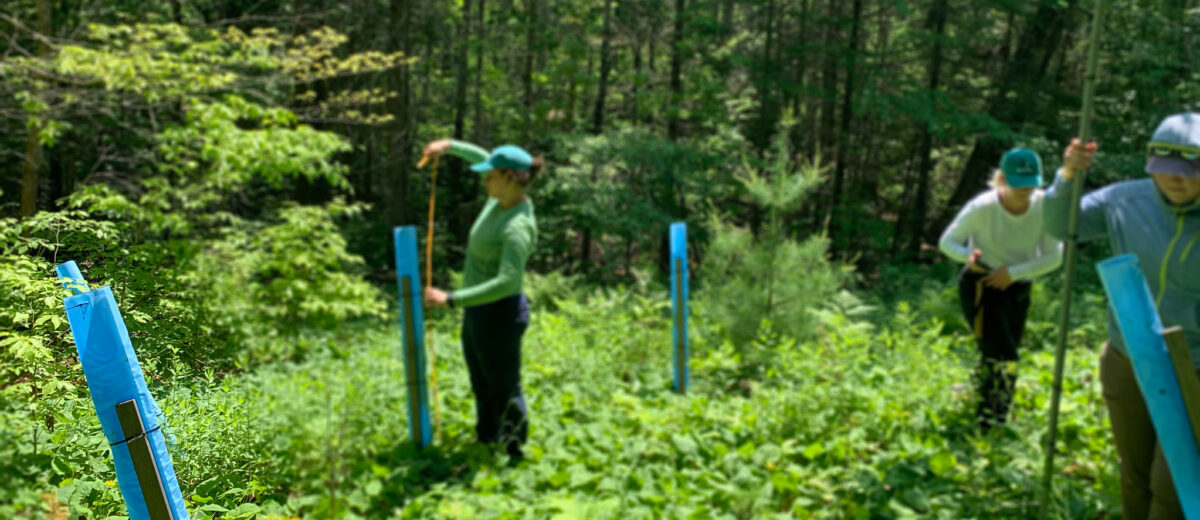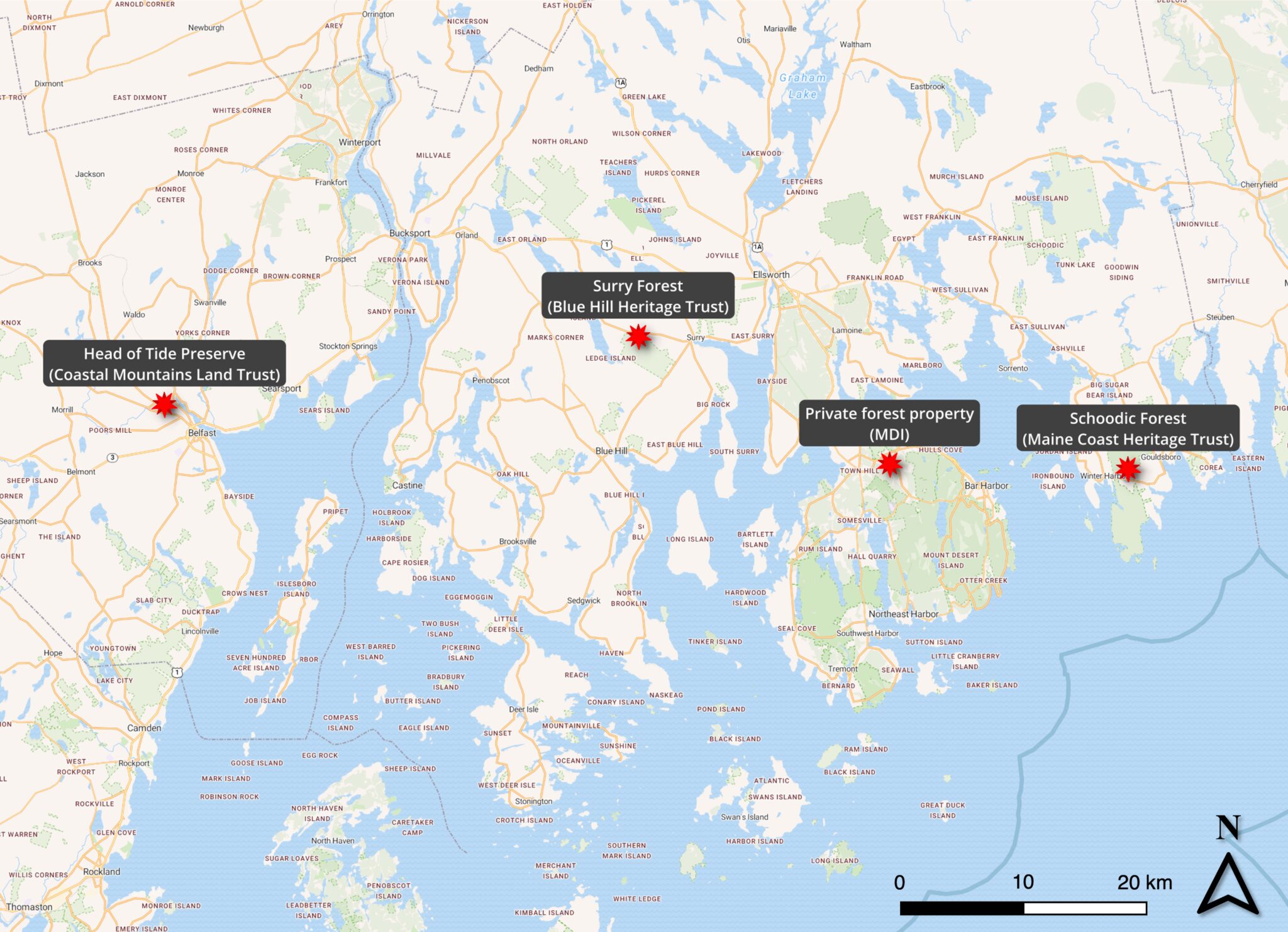by Jamie Attanasio and Kyle Lima
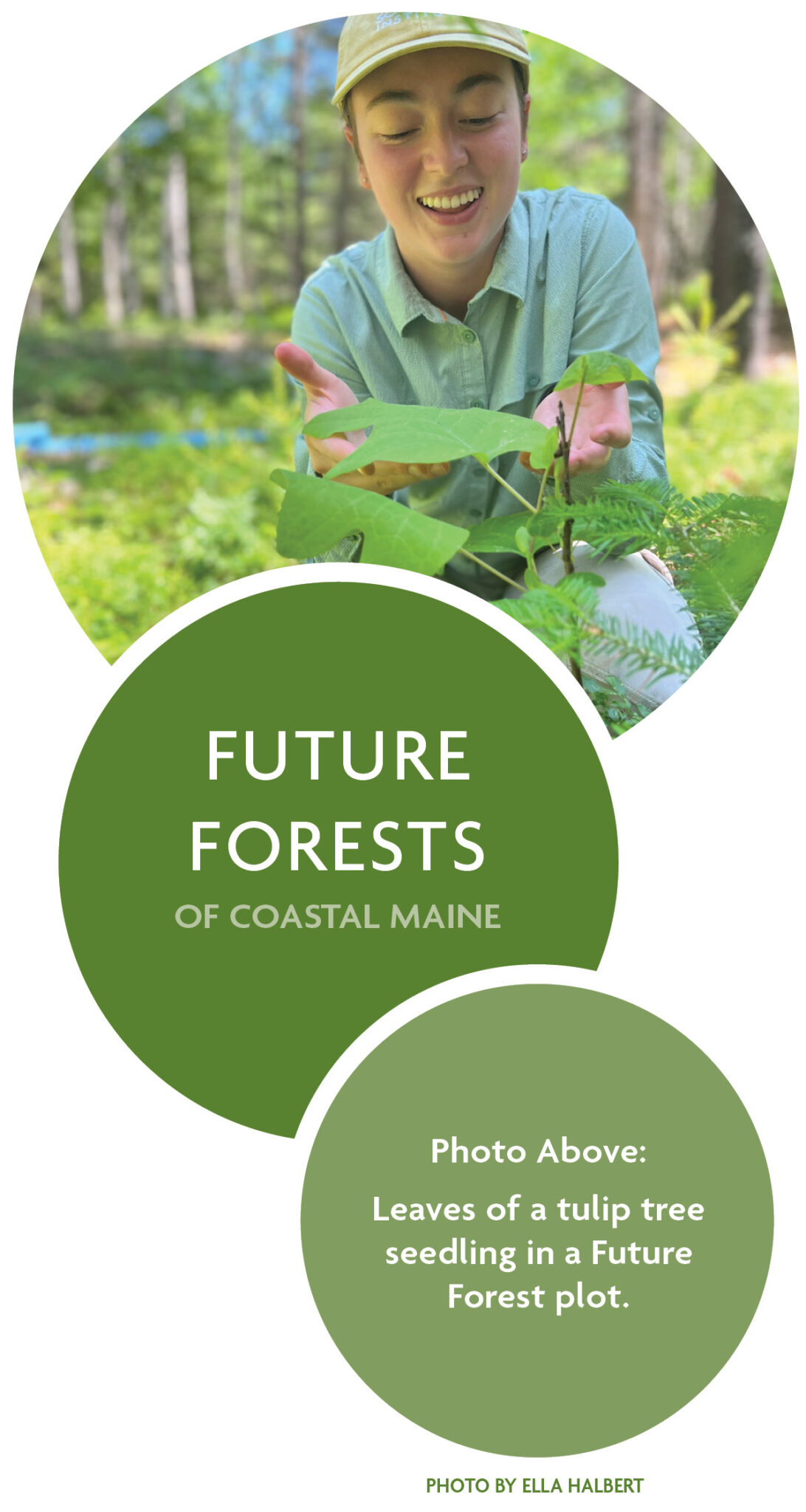 The forests of Maine are experiencing rapid changes including increasing temperatures, effects of invasive plants and insects, and shifting precipitation patterns. We are concerned some species that make up our forests may have difficulty adapting to these new conditions. This would lead to a decline in forest health, and the potential loss of trees. Consequently, researchers have been conducting experiments planting trees with southern ranges that are projected to do well in this region as a climate-informed reforestation approach. This concept is referred to as assisted migration, and more specifically, assisted range expansion.
The forests of Maine are experiencing rapid changes including increasing temperatures, effects of invasive plants and insects, and shifting precipitation patterns. We are concerned some species that make up our forests may have difficulty adapting to these new conditions. This would lead to a decline in forest health, and the potential loss of trees. Consequently, researchers have been conducting experiments planting trees with southern ranges that are projected to do well in this region as a climate-informed reforestation approach. This concept is referred to as assisted migration, and more specifically, assisted range expansion.
The purpose of the assisted migration of trees is to perpetuate forests and maintain the many functions they provide like wildlife habitat, carbon storage, and economic value. We recognize planting southern tree species would be a significant management decision. Our goal is for managers to have the most up to date knowledge and be able to make informed decisions for their landscapes in the face of disturbances and other stressors. However, this is a preliminary report, and more research is needed before making management decisions.
In 2019 Schoodic researchers and volunteers planted tree seedlings with current and projected habitat in this region at four different locations: Belfast, Surry, Mount Desert Island (MDI), and the Schoodic Peninsula. Some of these species are needleleaf, like pine or spruce, and some are broadleaf, like oaks. A subset of the seedlings also had blue tubes installed around them to keep them safe from deer, hare, or moose browse. We sample these locations twice a year, and record the survival of seedlings, measure their height, and note if they have been browsed. We decided to measure height and browse because understory trees need to be able to grow into the overstory canopy to reforest an area after a disturbance, and if they are browsed consistently enough to stunt their growth, that might not be possible.
What are the major takeaways?
Out of all the species planted, chestnut oak had the most seedlings survive, even though its northern range does not extend into the Downeast region of Maine. Another species with a more southern range, sweet gum, had the highest yearly growth. We also looked at how browse, and the absence of browse, impacted the seedlings. We found that chestnut oak had the most browse, and overall broadleaf species were browsed more than needleleaf. Finally, tubes protecting seedlings from browse did not have an impact on overall survival, but did greatly increase the growth of a seedling.
We want to thank Blue Hill Heritage Trust, Coastal Mountains Land Trust, Maine Coast Heritage Trust, and Waldo County Soil & Water Conservation District. This project would not have been possible without their support as well as funding support from individual donors.

Can southern species survive in coastal Maine?
2025 Key Results
Overall
Chestnut oak had the greatest number of seedlings survive (61.5%) despite its range only extending into York County, Maine. Eastern white pine and white spruce also had high survival rates. Tulip tree, a southern species whose current northern range is western Vermont, had the lowest survival (25.5%). Overall, 38.7% of southern seedlings and 46.1% of northern seedlings are still alive.
By Site
The Belfast site had the highest survival rate (59.7%), while the Schoodic site had the lowest survival rate (18.2%). This is a drastic difference that we plan to investigate further.
Tube impacts
The tubes did not greatly impact the survival of the seedlings; 87% of seedlings with tubes lived through the first growing season while 85% of seedlings without tubes lived through the season.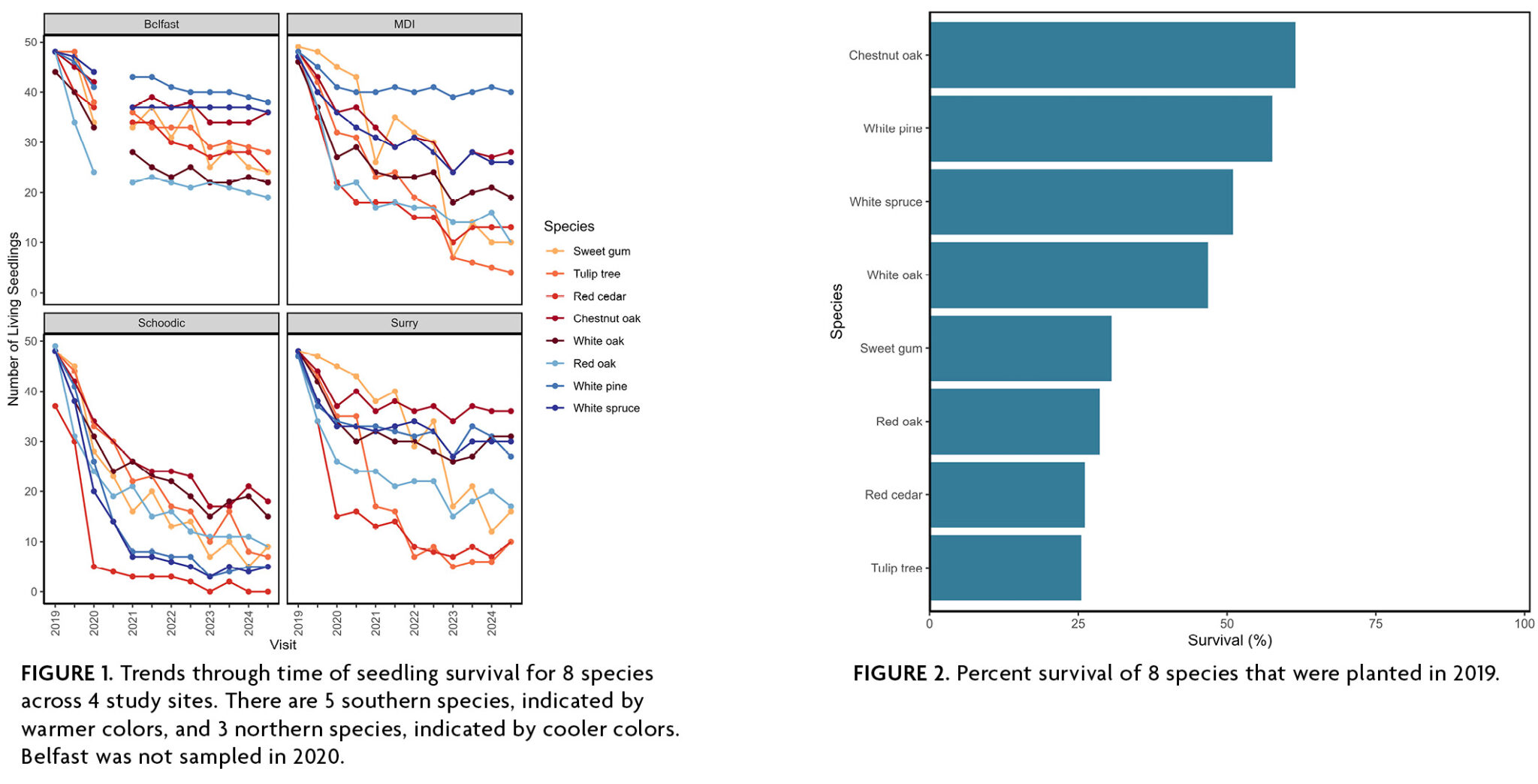
Does growth vary among species?
2025 Key Results
Overall
The species with the highest annual growth was sweet gum, which on average grew 14.1 cm each season. The species with the lowest annual growth was red oak, which on average grew 3.9 cm each season. There was not a difference in southern and northern species growth.
By Site
The Belfast site had the highest yearly mean growth (9.83 cm), and the Schoodic site had the lowest yearly mean growth (5.16 cm).
Tube Impacts
The tubes greatly impacted seedling growth. For example, the mean growth in 2019 without a tube was 2.80 cm, but when the seedlings were tubed, the mean growth was 7.99 cm. This is likely due to the seedlings being protected from browse and other factors, but there are concerns about the tubed seedlings growing too quickly upwards (in order to reach the light) while not adding enough width in the stem to support themselves.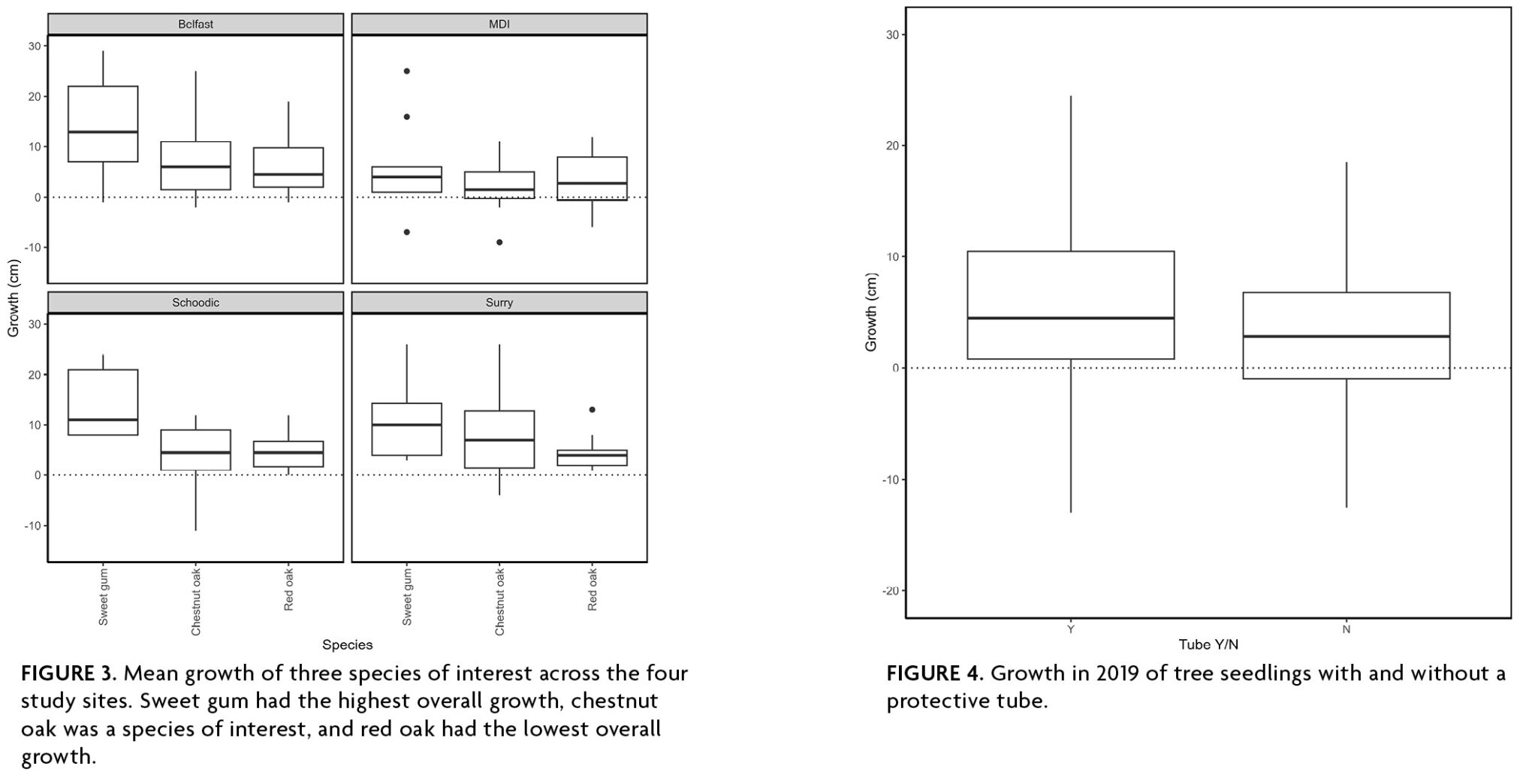
Which species were most impacted by browsing?
2025 Key Results
Overall
The species with the most browse was chestnut oak (49.2%), however it also had the highest survival rate. The species with the least browse was red cedar with no browse at all. Overall, broadleaf seedlings were browsed substantially more than needleleaf species.
By Site
The Schoodic site had the most browse (69.1%) and also had the highest mortality. Meanwhile, the Surry site had the least browse (8.5%).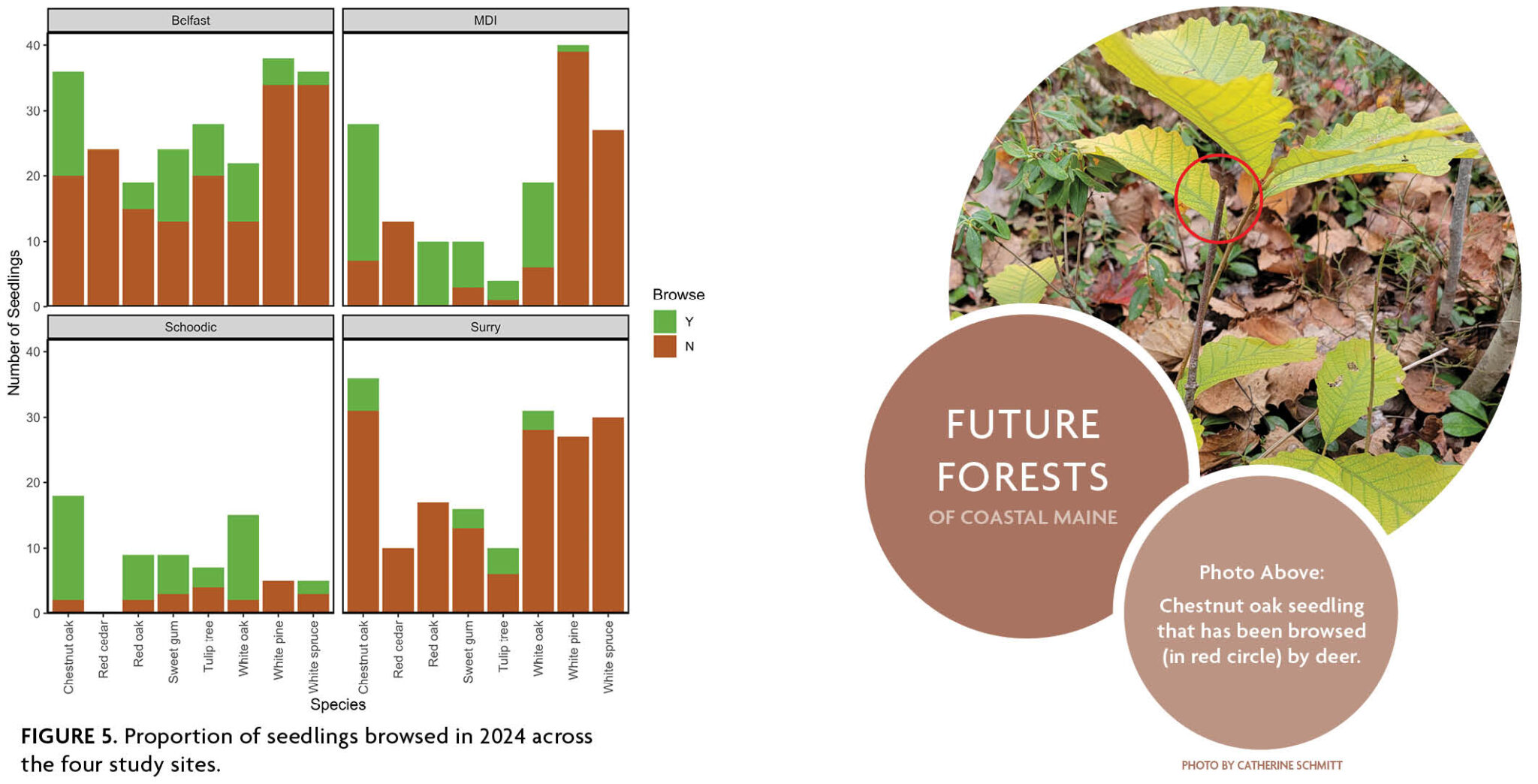

How do the oaks compare?
We wanted to highlight chestnut oak, particularly in comparison with white oak and red oak. Chestnut oak is the most southern oak, with its northern range extending into York County, Maine. White oak is also a southern oak, and is found up to the Midcoast region of Maine. Meanwhile, red oak is the most common oak species in Maine and can be found throughout the state.
Chestnut oak had the most seedlings browsed out of all the species, yet still had the most survival. Even with the high browse of seedlings, its average growth per season was slightly better than red oak and white oak, which had less browse overall. White oak also had greater survival, more growth, and more browse than its northern counterpart the red oak.
We are interested in why chestnut oak and white oak fared better than red oak, and will continue monitoring to see if this holds true as the study continues.
Future work
 We plan to continue monitoring the research plots on a regular schedule. By continuing this project we can see what species are surviving in the long term, and if any of the species are able to grow into the overstory. We are also interested in the growth rate per season, and what factors could have impacted overall growth of a species. We noticed that 2023 was a particularly poor growing season across all sites, and we are going to look at how temperature and rainfall could have impacted growth.
We plan to continue monitoring the research plots on a regular schedule. By continuing this project we can see what species are surviving in the long term, and if any of the species are able to grow into the overstory. We are also interested in the growth rate per season, and what factors could have impacted overall growth of a species. We noticed that 2023 was a particularly poor growing season across all sites, and we are going to look at how temperature and rainfall could have impacted growth.
In the fall of 2024 all tubes were removed from the seedlings, so all seedlings will be subject to browse. We will see if the growth and mortality of the species and the tubed individuals will be impacted. We also want to look into the population of hare and deer at the sites, and if those population numbers correspond with the amount of browse a site has.
In addition, there was high variation among sites. Seedlings at the Schoodic site struggled with the lowest growth per year, lowest survival rate, and highest browse rate. Meanwhile, the Belfast site had the highest growth per year, highest survival rate, and the second lowest browse rate. We plan to assess the differences in environmental conditions (temperature, moisture, light availability, soil conditions) between the sites to see if this explains the high degree of variability between sites.
The rapid pace of climate change will continue to alter Maine’s forests. This is one of many studies being conducted throughout the Northeast that is expanding the ranges of southern tree species to see if they can thrive in this altered northern clime. By aggregating this research, managers can plan for this new climate regime and perpetuate forested landscapes in Maine.
